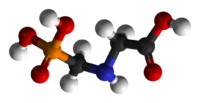
Photo from wikipedia
A Society of Environmental Toxicology and Chemistry (SETAC) Focused Topic Meeting (FTM) on the environmental management of per- and polyfluoroalkyl substances (PFAS) convened during August 2019 in Durham, North Carolina… Click to show full abstract
A Society of Environmental Toxicology and Chemistry (SETAC) Focused Topic Meeting (FTM) on the environmental management of per- and polyfluoroalkyl substances (PFAS) convened during August 2019 in Durham, North Carolina (US). Experts from around the globe were brought together to critically evaluate new and emerging information on PFAS including chemistry, fate, transport, exposure, and toxicity. After plenary presentations, breakout groups were established and tasked to identify and adjudicate via panel discussions overarching conclusions and relevant data gaps. This manuscript is one in a series and summarizes outcomes of presentations and breakout discussions related to 1) primary sources and pathways in the environment; 2) sorption and transport in porous media; 3) precursor transformation; 4) practical approaches to the assessment of source zones; 5) standard and novel analytical methods with implications to environmental forensics and site management; and 6) classification and grouping from multiple perspectives. Outcomes illustrate that PFAS classification will continue to be a challenge and additional pressing needs include increased availability of analytical standards and methods for assessment of PFAS and fate and transport, including precursor transformation. While the state of the science is sufficient to support a degree of site-specific and flexible risk management, effective source prioritization tools, predictive fate and transport models, and improved and standardized analytical methods are needed to guide broader policies and best management practices. This article is protected by copyright. All rights reserved.
Journal Title: Environmental toxicology and chemistry
Year Published: 2021
Link to full text (if available)
Share on Social Media: Sign Up to like & get
recommendations!